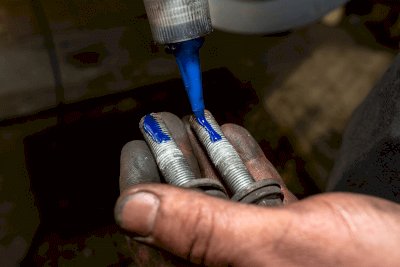What Is a Threadlocker?

Threadlocker is an adhesive designed to prevent the loosening of threaded components, such as screws, in applications ranging from household furniture to industrial machinery. By filling the gaps between threads and solidifying, threadlockers enhance the airtightness of threaded connections and mitigate leakage, especially in die-cast parts where porosity can lead to oil leakage.
Uses of Threadlockers
Threadlockers are utilized across various sectors to secure connections that are susceptible to loosening due to vibration or rotational forces. They are particularly valuable in improving the airtightness of threaded assemblies and preventing leakage in die-cast components with inherent porosity.
Principle of Threadlockers
By penetrating the space between the male and female threads and curing, threadlockers create a bond that resists rotational forces, effectively preventing loosening. Although they bond threads together, threadlockers are designed to allow disassembly when necessary, balancing adhesive strength with removability. Most threadlockers are anaerobic adhesives, curing in the absence of air.
Other Information on Threadlockers
Screw loosening can result from rotational or non-rotational forces. Threadlockers address rotational loosening by countering the tendency of screws to unwind under external stress. Non-rotational loosening, on the other hand, involves a reduction in the axial force of a screw due to wear, sinking of mating parts, or creep from prolonged stress or heat. In such cases, addressing the underlying causes of stress or deformation is crucial to prevent loosening.